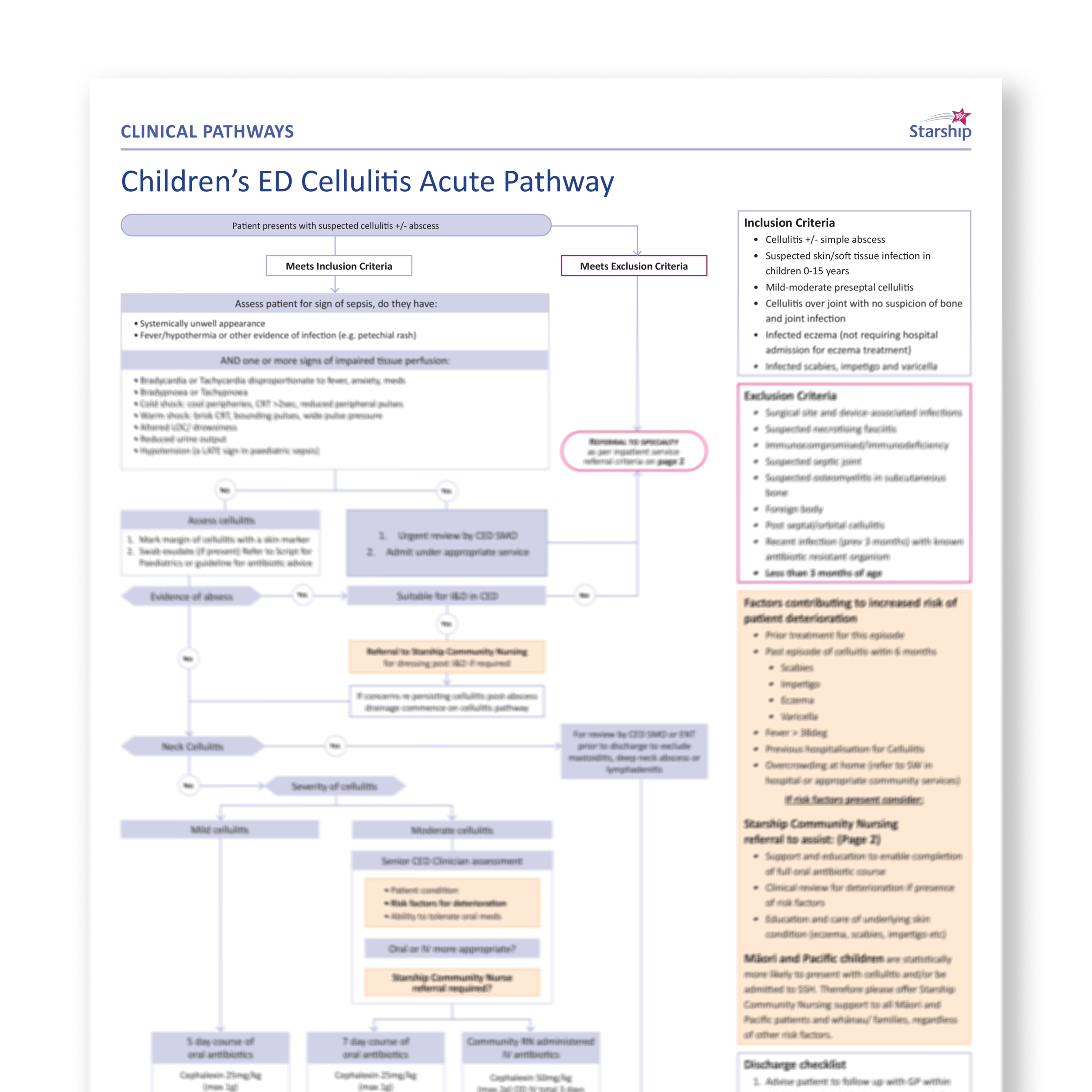Increasing clinical efficacy with a visual design system
Designing Starship Hospital’s clinical pathways for better patient outcomes
Clinicians must navigate a complex health system and decide what care is best for their patients. Clinical Pathways aim to make that process even easier.
A draft of a clinical pathway to test the design system. (Note: This is not a final pathway output)
What is a clinical pathway?
Clinical pathways incorporate clinical guidelines and “clinical processes of care within the unique culture and environment of a healthcare institution, thereby maximizing patient safety and clinical efficiency.” They are usually developed by an interdisciplinary healthcare team for a holistic understanding and coordination of patient care. The format uses an algorithm to detail the process for treatment and “aims to standardise care for a specific clinical problem, procedure or episode of healthcare in a specific population.” 1.
In early 2021, Starship Hospital’s Pathways and Outcomes team approached Ara Manawa with an opportunity to improve patient outcomes by standardising care through clinical pathways. To be successful the clinical pathways needed to be easy to use for clinicians. Ara Manawa worked with Starship’s team to develop a visual design system for their clinical pathway initiative.
What is a visual design system?
A visual design system is a set of visual elements (like colour, fonts, and layout), guided by clear standards, that can be put together in different ways. A visual style guide defines the visual elements, how they are used and how they work together.
To build a picture of the industry standard, we conducted an audit on existing clinical pathways from prominent institutions. This research informed the visual design system, which considered the use of colour, information hierarchy, and layout. Analysing the use of various visual elements, we selected what we felt would be the most successful for our purposes. As the visual design system began to take shape, we were able to run tests on clinical pathways to develop the system into a fully formed visual style guide and template.
July 2021
THANKS TO
Sarah Wilson and Amelia Tunnicliffe, Starship Pathways and Outcomes Team
AUTHOR
Jenna Hagan, Visual Designer, Ara Manawa
REFERENCE
Rotter T, de Jong RB, Lacko SE, et al. Clinical pathways as a quality strategy. In: Busse R, Klazinga N, Panteli D, et al., editors. Improving healthcare quality in Europe: Characteristics, effectiveness and implementation of different strategies [Internet]. Copenhagen (Denmark): European Observatory on Health Systems and Policies; 2019. (Health Policy Series, No. 53.) 12.
Available from: https://www.ncbi.nlm.nih.gov/books/NBK549262/



